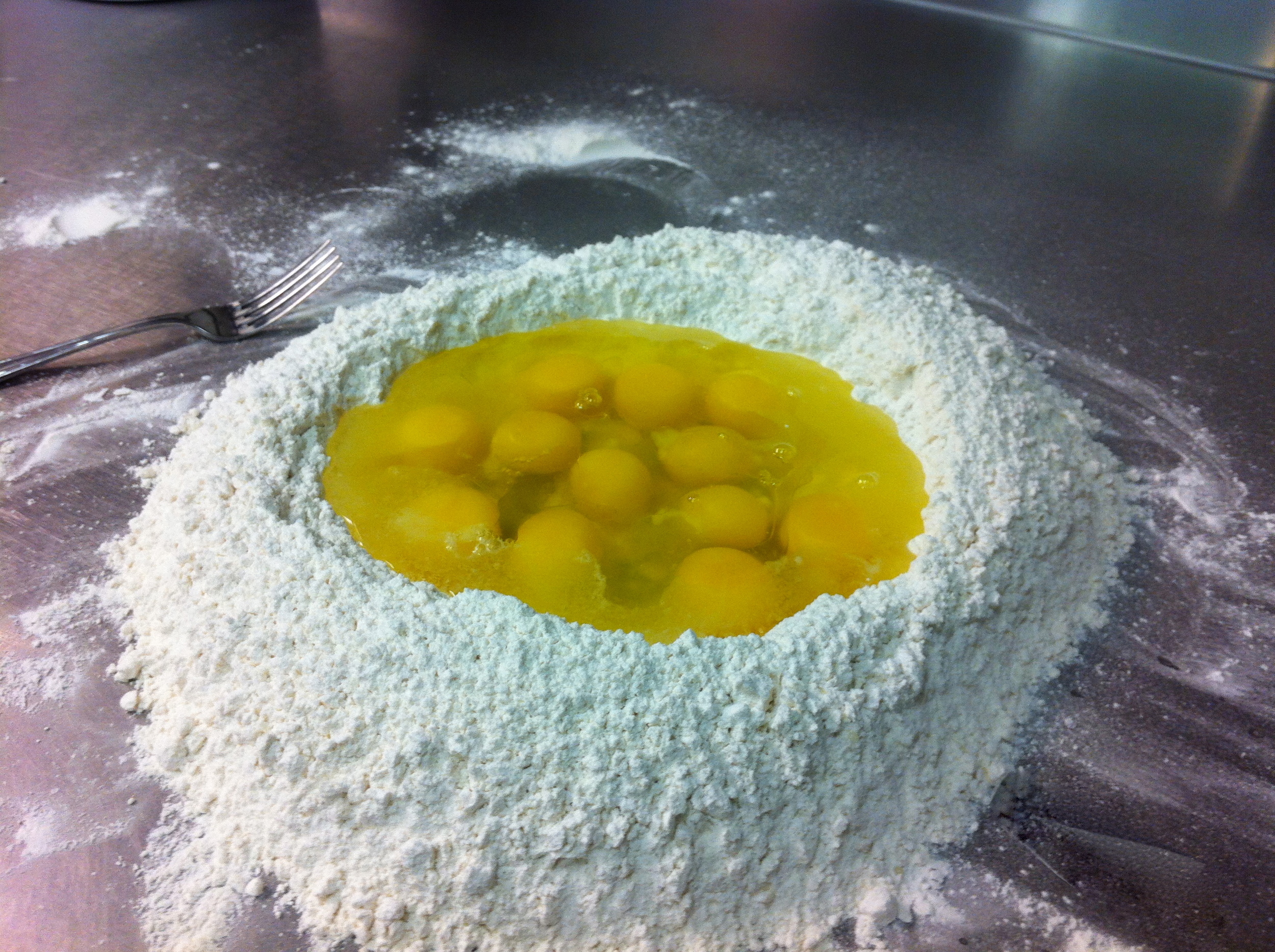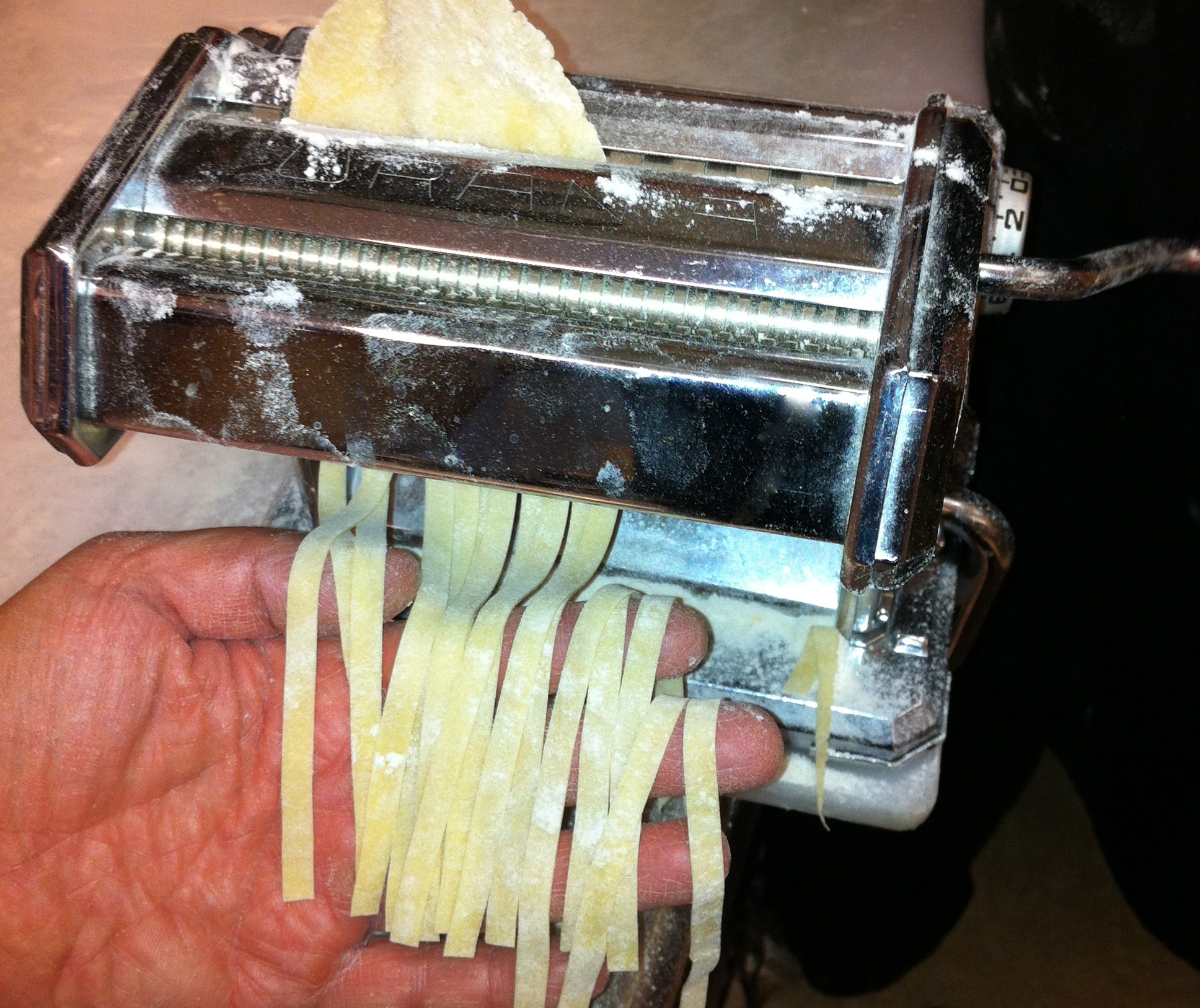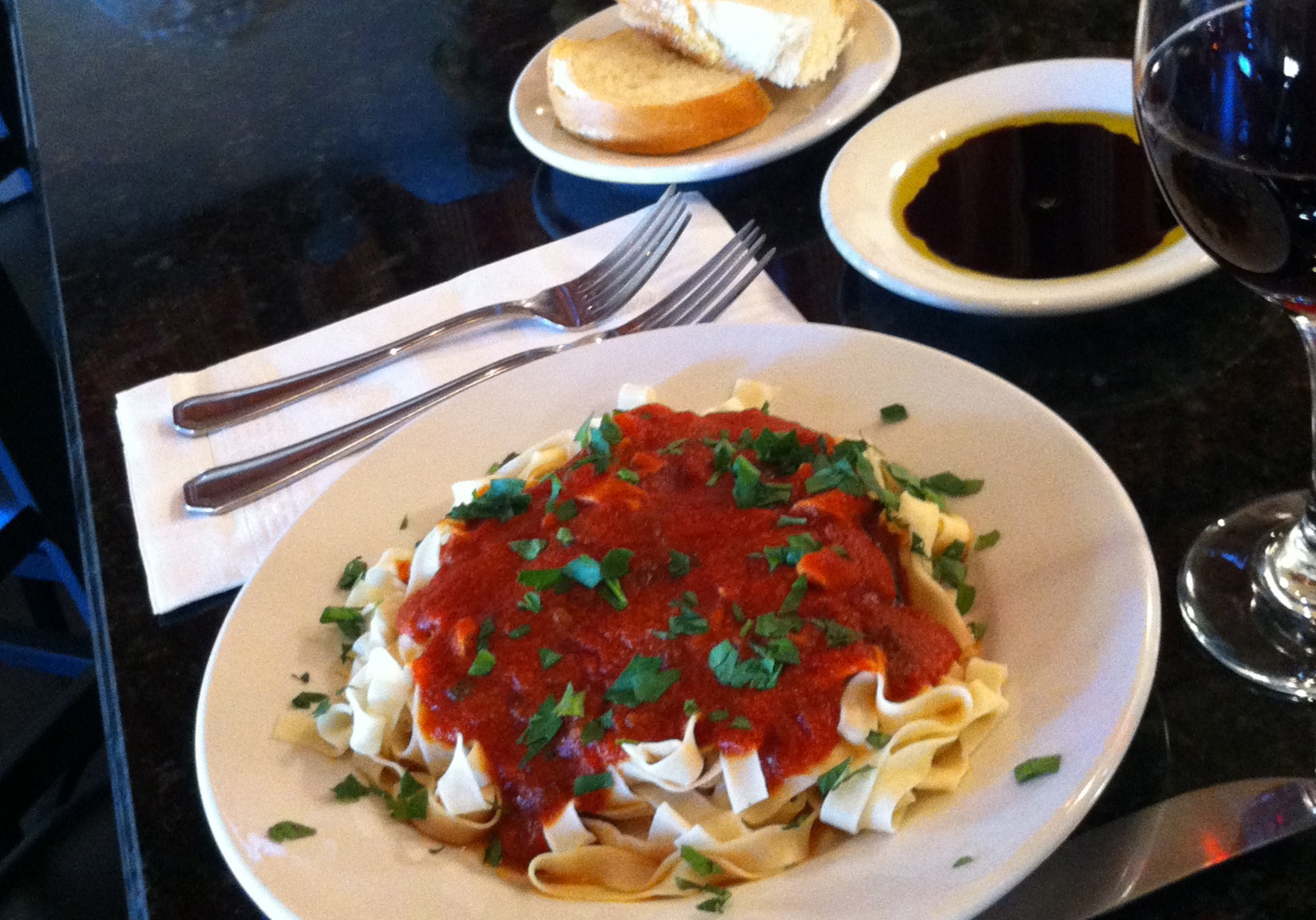Our Take on Tasty Tagliatelle
Is there anything like fresh pasta for providing a wonderful pallet for a delicious sauce? And nothing gives you a workout like kneading pasta from scratch. Although it requires a little extra, effort it’s worth the reward! We hope you enjoy our method for making fresh pasta (tagliatelle) that we offer as a special at Nonni's Corner Trattoria. Our recipe was also published in Views and Voices. Enjoy!
Ingredients
2.2 lbs all purpose flour sifted
2-3 cups additional flour set aside for use while kneading
1 dzn large eggs
4-5 tbs extra virgin olive oil
1 tsp salt
4 tbs coarsely ground fresh black pepper or red pepper flakes (optional)
Tools
Long metal spatula or dough scraper
Pasta rolling machine with cutter attachment
Rolling pin
A fork
On a clean, large, smooth working surface, sift 2.2 lbs into large “mountain.” Using a circular motion with your hand, create a crater in the middle of the mountain wide enough and with high walls to hold all of the eggs. Crack a dozen eggs into a separate container and remove any egg shell pieces that might accidentally fall in. Pour eggs into the “crater” you formed.
Using a simple fork, break all the yokes and start to whisk. Begin incorporating small amounts of flour at a time. While whisking add in extra virgin olive oil, salt and pepper if you like. Continue whisking and incorporating flour being careful to maintain your crater walls until the mixture becomes think enough to control.
As the mixture approaches the consistency of a thin dough, use the long metal spatula to fold in remaining flour from your “mountain.” Use the spatula to scrape the mixture from your work surface and continue folding flour and loose dough mixture onto itself until all flour is worked in.
Begin kneading the pasta dough by stretching the dough in one direction and then kneading it back onto itself. Then turn the dough one quarter turn and stretch and knead again. Use the extra 2-3 cups of flour set aside to keep your work surface well floured throughout the kneading process. Continue stretching and kneading for at least 10-15 minutes until the dough has an elastic and smooth texture.
Roll dough into a ball, cover with cellophane and let it set up in the refrigerator for 15 minutes. While your dough is resting, set up you pasta machine by firmly clamping the it to your work surface. Cut off a small piece of dough to begin rolling. Roll dough into a rectangular shape no wider than the mouth of your pasta machine and about 1/4 inch thick. Keep your dough well floured.
Starting with the thickest setting, roll your dough through your machine. Flouring your dough as needed to avoid it sticking in your machine’s rollers. Continue rolling the dough through the machine using smaller settings until you’ve reached the smallest one.
Now attach the pasta cutting attachment. Flour the rolled dough and crank it through the cutting attachment using the cutting size of your preference. If you don’t have a pasta cutting attachment, dust your pasta sheet and gently fold it onto itself several times and then cut into thin strips. Dust cut pasta with flour and gently wind into small nests.
To cook your fresh pasta, salt a large pot of water and bring it to a rolling boil. Salted water should take like the sea. Drop pasta into boiling water for 2-3 minutes until cooked. Pasta can overcook quickly and should be firm to the tooth or “al dente.”
Drain well in a colander, plate and cover with your favorite sauce. Serves 4-6.




